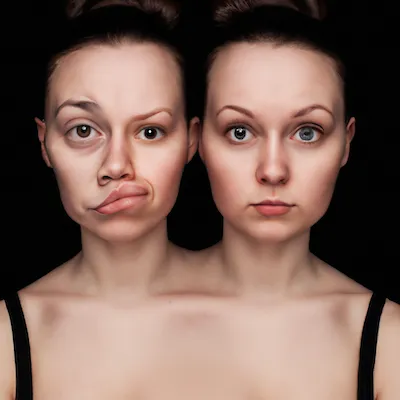Rebuilding body image with body neutrality
Feeling comfortable and confident in your skin in recovery from bulimia nervosa is a process. Some people think they’ll automatically love their body because they have a new relationship with food or have stopped binge eating or purging. But that’s not always the case. A person can overcome the behaviors of an eating disorder but still not like their physical appearance. One way of improving body image in bulimia recovery is practicing body neutrality and this can be helped in therapy
What is body neutrality?
Body neutrality is a middle ground between body positivity and body negativity. (1) Instead of reminding yourself that you’re beautiful or complimenting a physical attribute, body neutrality involves cultivating a relationship with your body that isn’t based on how you feel about your appearance. Body neutrality can be especially important for people who don’t see their bodies celebrated or represented, including people who are fat, disabled, and/or transgender.
Body neutrality is also about acknowledging that it is okay not to feel beautiful. It’s natural not to feel confident about every aspect of your physical appearance every day, especially when there are so many messages from the media and other people encouraging us to be insecure about certain physical characteristics. Body neutrality is about recognizing that beauty and happiness are not tied, and if someone doesn’t like how they look, that doesn’t mean they can’t care for their body and find joy in other aspects of their life.
Practicing body neutrality
Consider these tips to become more body neutral. (2)
Building body neutrality is a process. It takes time to shift your thoughts and become more accepting of your body. Consider these tips to become more body neutral. (2)
- Appreciate that your body keeps you alive. Not all bodies are able to do the same things and perform the same functions, so it may be beneficial to tune into the ways that your unique body supports you. That may include things like healing from injuries, making new cells, allowing you to connect with other people, and providing you with the ability to experience things that bring you joy.
- Try not to engage in body talk conversations. Friends or family members may comment about your body if you’re openly going through BN recovery. They may see these comments as compliments, and they want to acknowledge that they see you overcoming your eating disorder and are proud of the work you are doing. They may also be unaware of what could be triggering to say, so it’s okay to express what isn’t helpful for your recovery. However, conversations about how a person looks can feel uncomfortable, and it’s okay to disengage from those conversations. Not engaging with body talk includes body conversations with yourself. Practice not making comments about your own or others physical attributes, but instead redirect the conversation to other topics. If friends or family bring up the topic of your recovery, feel free to change the subject or share aspects of recovery not directly connected to body shape and size.
- Acknowledge and reframe negative thoughts toward your body. It’s natural to not feel 100% positive and confident about yourself all of the time. Acknowledge those thoughts when you have them and reframe them to be more neutral by focusing on how your body feels or aspects of your life unrelated to your body.
- Try not to compare your body to others. Body comparison is one of the primary contributors to body negativity. Try not to compare yourself to how other people look. This may mean deleting social media or avoiding certain media outlets that fixate on physical appearance.
- Practice patience. Like anything in bulimia recovery, the road to body neutrality takes time. It’s okay to feel frustrated or overwhelmed with the process. Practice patience and be kind to yourself for how far you’ve come in your bulimia nervosa recovery.
You might be interested in
Improving body image with HAES
Healthy at Every Size (HAES) provides a holistic definition of health not characterized by a person’s illnesses, limitations, or weight. Incorporating HAES into bulimia nervosa recovery is about understanding that everyone’s body looks different and that no specific weight, look, or size deems a person healthy or deserving of care. What may be “healthy” for one individual is not necessarily healthy for everyone, especially when it comes to body size or weight. (3) Instead, this approach focuses on health for each person, with the understanding that genetics, chronic illness, disability, and other factors influence conceptualizations of health.
The principles of HAES
There are five primary principles involved with HAES.
- Weight inclusivity: There is not only one healthy body size or appearance. People can be healthy at all different sizes and weights. Some people will never achieve a certain standard of health due to chronic illness or disability and they also deserve care.
- Health enhancement: Health policies should equalize access to information and should include an individualized approach to a person’s physical, social, emotional, and spiritual needs.
- Eating for well-being: Eating is individualized based on hunger, nutritional needs, and pleasure rather than regulated food plans and weight control.
- Respectful care: Everyone deserves respectful, trauma informed health care without weight stigma or bias.
- Life-enhancing movement: Physical activities should support people of all sizes and abilities to engage to the extent they choose.
Improving your body image is part of your bulimia nervosa recovery process; you don’t have to do it alone. Within Health offers revolutionary support for people with an eating disorder to receive clinically superior care at home. The personalized programs offered by Within use the latest technology to provide real-time interactive experiences accessible to everyone, regardless of their shape, size, ethnicity, gender expression, sexuality, or background. Contact our admissions team today to learn more about the Within Health approach to helping individuals heal from bulimia nervosa.








